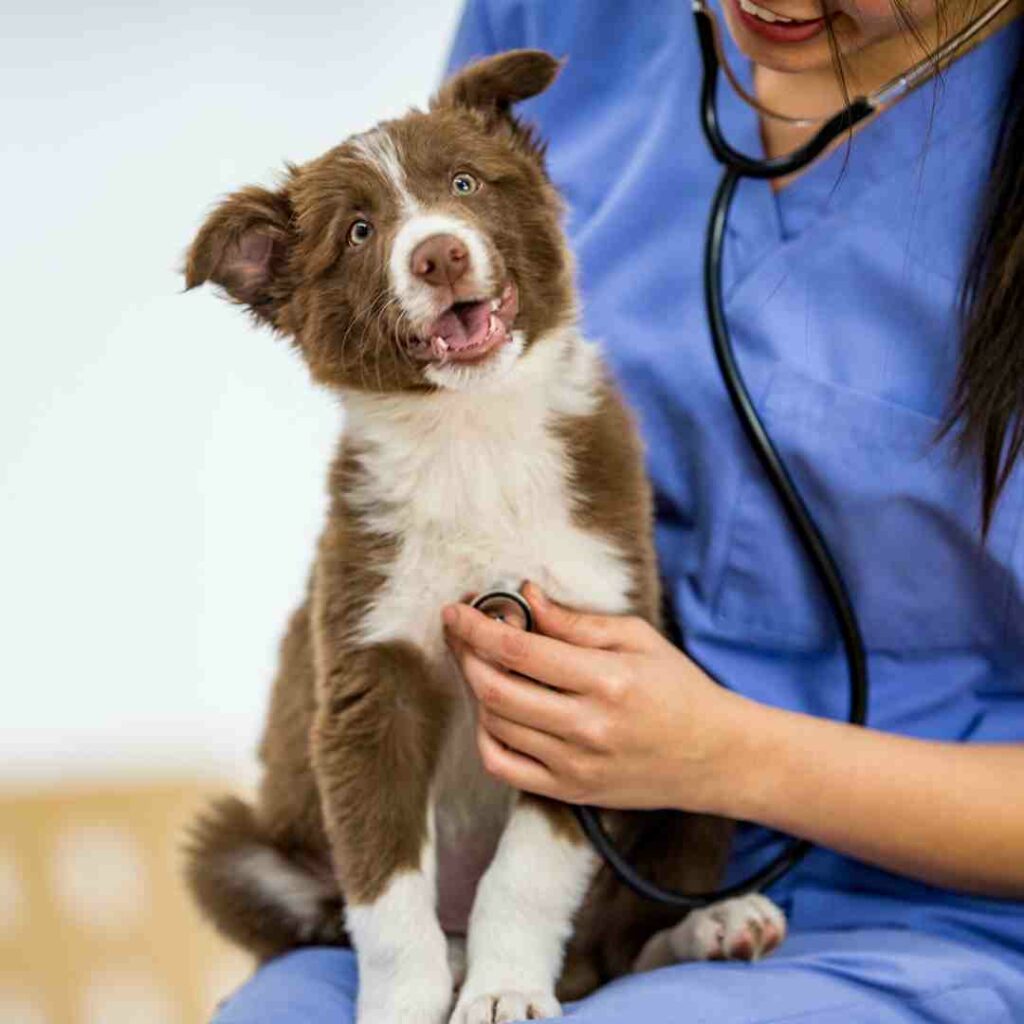Eye infections in dogs can be as uncomfortable for them as they would be for you, potentially even more so since they rely heavily on their sense to navigate the world. Recognizing the symptoms of dog eye infections early can save your furry friend from discomfort and more serious complications. These symptoms may include redness, discharge, or your dog squinting – a sign they might be in pain or irritation. You might even notice them pawing at their eyes or their eyes looking a bit cloudier than normal.
But what actually causes these pesky eye problems in our canine companions? Common causes of dog eye infections range from bacteria to foreign objects, or even underlying health issues that might not be immediately apparent. It’s like playing detective—you need to watch for signs, gather clues, and sometimes consult a professional (your vet) for the fuller picture. By understanding and addressing these causes, not only can you help soothe your pooch’s current woes, but also take steps in preventing eye infections from recurring. (It’s always better to play it safe, right?)
Delving deeper, think of treatment as a two-pronged approach: easing your dog’s immediate discomfort and tackling the root problem to prevent it from coming back to haunt you. Your vet might recommend antibiotic drops for a bacterial infection or suggest other medication specific to the diagnosis. Remember, what works for one dog might not work for another; it’s about finding the right fit for your furry family member. Isn’t it a relief to know that with attention and care, you can help keep those puppy eyes bright and clear?
Key Takeaways
- Prompt identification of symptoms can mitigate discomfort and prevent serious complications.
- Causes of infections are diverse and prevention requires keen observation and proactive care.
- Treatment is tailored to the dog’s unique needs, ensuring a happier, healthier pet.
Recognizing Symptoms and Causes
When your furry friend starts showing signs of discomfort around their eyes, it’s vital for you to recognize the symptoms promptly. Understanding what’s causing this distress is equally important because it sets the stage for the most effective treatment.
Identifying Symptoms
You know your dog best, so when they start excessively blinking or squinting, it’s a signal something’s not right. Their eyes might turn red, a clear sign of irritation or infection. Discharge, either clear or resembling the color of yellow or greenish goo, can be another telltale symptom. Ever seen your dog’s third eyelid? (Yes, they have one!) If it’s more prominent than usual, that’s a red flag. Infections can cause this third eyelid to prolapse, looking like a pinkish membrane in the corner of the eye.
Understanding Causes
Imagine how annoying it would be to get an eyelash stuck in your eye. Now, think about your dog romping through tall grass, their face brushing against every shrub. Those pesky foreign bodies are a frequent culprit behind eye infections. And let’s not forget the microscopic unwelcome guests: bacteria, viruses, and allergens. Each of them can waltz right in, uninvited, to cause trouble. Dogs can also suffer from allergies that inflame their eyes, similar to how you might experience seasonal despair with pollen. Then, there’s conjunctivitis, the inflammation of the eye’s outer lining. You’ve probably heard of “pink eye” in humans, right? Well, dogs can get their own version of it too.
Diagnosis and Treatment
When your furry friend develops eye trouble, spotting the signs early and seeking a vet’s expertise is crucial. Let’s dive into how professionals diagnose canine eye infections and the treatments that can help your pup’s peepers get back to their best.
Professional Diagnosis
Your vet will start by thoroughly inspecting your dog’s eyes. It may seem like they are using secret codes, but they’re really looking for signs such as redness, swelling, or discharge. Fluorescin stain—a special dye—reveals corneal scratches, while a Schirmer tear test measures tear production to rule out dry eye. These steps are essential (you wouldn’t want to miss an underlying condition that could veil itself as a simple irritation, right?).
Available Treatments
Congratulations—you’re through the tough part! Now, depending on the diagnosis, treatments can range from simple eye drops to oral antibiotics. Sometimes the vet might prescribe an ointment, and if the case calls for it, even surgery might be discussed. It’s important to follow their instructions (an Elizabethan collar might look funny, but it does stop your dog from rubbing their eyes). And while home remedies sound tempting, they’re not a substitute for a vet’s care, so keep that in mind. Your pooch is counting on you to follow the pros’ advice to the letter.
Complications and Prevention

Maintaining the health of your dog’s eyes is not just about clear vision—it’s a key factor in your furry friend’s overall well-being. Unaddressed eye infections can escalate into worrisome complications, so let’s ensure we’re on top of prevention.
Potential Complications
When it comes to eye infections in dogs, you certainly don’t want to turn a blind eye. One such grievous issue is uveitis, which is inflammation inside the eye and can lead to pain and vision loss. Then there’s the dreaded corneal ulcer, where scratches on the surface of the eye become infected – imagine how that must sting! Meanwhile, untreated infections can pressure the eye to develop glaucoma, a condition that’s as serious as it sounds, often resulting in significant discomfort and potential blindness. For a touch more drama, infections might even hint at underlying conditions like canine distemper—that’s a chapter you’d rather not read in your dog’s life story. And don’t get started on tumors—abnormal growths that could be lurking behind persistent infections.
Preventing Eye Infections
Now, for a bit of sunlight after the stormy prognosis—prevention. (Because who wouldn’t want to dodge those complications?) First, consider a pair of sleek dog goggles for your adventurous companion to shield those peepers from dust and debris. Next, in the aftermath of an infection, a cone becomes a knight in shining armor, averting your dog’s valiant attempts to scratch or rub its eyes. And don’t underestimate the comfort of a clean environment—a haven from irritants like smoke and chemicals. What about vaccines, you ask? Yes, they play a starring role—keeping the distemper virus at bay is a vaccine’s red carpet moment. Last but not least, regular vet check-ups are your co-pilot, ensuring your pooch’s eyes remain out of harm’s way. So, gear up, stay vigilant, and let those tails wag in the clear skies of eye health!

Frequently Asked Questions
Navigating the murky waters of a dog’s eye infection is no small feat. Each question below sheds light on the vital steps you should consider to help your furry friend blink back to perfect health.
How can I treat my dog’s eye infection at home?
You’ve noticed your dog pawing at their eye, and it looks red—don’t worry, there’s a way to help at home. Start by gently (like you’re handling a soap bubble) wiping the eye with a clean damp cloth to remove any discharge. Ensure you’re not playing vet though—eye infections can be tricky and sometimes home remedies just won’t cut it.
What are the different types of eye infections in dogs?
Scratch the surface, and you’ll find a trove of infections that can bother your pup’s peepers. Canine conjunctivitis is the inflammation party nobody wants an invite to, and keratitis is about as fun as a sandpaper pillow. There’s more to this infection lineup, so getting to know them can be a real eye-opener.
Can my dog’s eye infection spread to other pets or humans?
You’re cuddling on the couch, and that worrisome thought pops up: “Can I catch this?” While it’s rare, some infections like conjunctivitis can be an unwanted gift to other pets (sigh, Fido), and in some cases, even to you. Rule of thumb—keep it clean and no sharing!
What are the common signs and symptoms of eye infections in dogs?
Sometimes it’s as obvious as a clown at a funeral: redness, squinting, goopy discharge—your dog’s eyes are mounting a distress signal. These symptoms scream for attention, and catching them early can save you and your pup from a longer headache.
How will I know if my dog’s eye infection requires veterinary attention?
When the DIY approach takes a nosedive, it’s time to call in the cavalry. If you’re noticing things like changes in the eye, behaviour that screams discomfort, or if your Spidey-sense is tingling that something’s not right, scoot over to your vet. It’s better to err on the side of caution, because when it comes to eyes, you don’t want to be blindsided by complications.
Can eye infections in dogs resolve without medical treatment?
You’re crossing your fingers, hoping Mother Nature will step in so you can avoid another vet bill—sometimes it happens. Minor infections may clear up on their own. But—and it’s a big but—if your dog is in discomfort or the infection is looking as stubborn as a mule, it’s time to seek professional advice. It’s just not worth the gamble, and hey, no one wants to see their best friend in distress.





